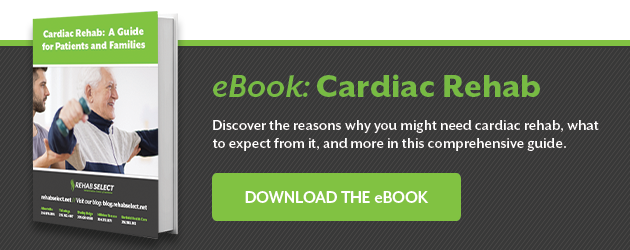
Cardiac therapy is often recommended for people who have heart disease, and/or had some sort of cardiac event like a heart attack. Cardiomyopathy, congenital heart disease, peripheral arterial disease, and heart failure patients can also often benefit from this therapy, to increase survival and improve quality of life.
According to the American Heart Association, cardiac rehab programs contain three essential parts:
- Exercise counseling and training
- Education for heart-healthy living
- Counseling to reduce stress
Benefits of Cardiac Therapy
Cardiac rehab programs provide several benefits to patients by improving cardiac function and overall health:
- It encourages a heart healthy diet and lifestyle
Poor diet can contribute to cardiovascular disease. Cardiac rehabilitation/therapy seeks to address that by providing nutritional counseling and a focus on more healthful eating.
- It can help patients quit smoking
Cardiac patients who smoke are putting themselves at great risk of continued cardiac problems and even death. Cardiac therapy can help patients stop smoking so that that risk is reduced.
- It focuses on safe, effective exercise
Regular exercise improves cardiovascular fitness and strength. It also helps patients control weight and is a natural, healthy way to reduce stress.
- Engaging in exercise safely
Cardiac patients usually can't simply begin to exercise on their own. For their own safety, medical personnel must work with them closely and establish an exercise program that will increase strength and resiliency, strengthen the cardiovascular system including the heart, and reduce stress, without putting them in danger.
- Undergoing a stress test
Patients may be asked to undergo a stress test (such as running on a treadmill while being closely monitored) before they undertake an exercise program. Weight, problems like angina, and other difficulties including joint disorders will also be considered when exercise programs are constructed.
- Designing a personalized program

Once all factors are taken into consideration, the cardiac rehab therapist (such as that at a skilled nursing facility in the community) will work with the patient and other medical professionals to construct and prescribe an exercise program specific to that particular patient's needs. Factors adjusted will include duration intensity, and frequency of the exercise. Patients' exercise preferences will also be considered if possible and included in the program. For example, a patient who may not like walking on a treadmill may very much enjoy swimming.
- Performing exercise under medical supervision
For the first several sessions, exercise will be conducted with close supervision by medical personnel. Patients may be monitored for cardiac function during exercise at first; once strong enough, patients can continue at home.
- It helps patients deal with stress and depression
It is common for patients with cardiac difficulties to deal with stress and depression, both when newly diagnosed and on an ongoing basis. Mental health professionals trained to deal with depression and anxiety in cardiac patients may be part of the patient's team during cardiac rehab. If therapy needs to continue long-term, these professionals can also make referrals so that patients continue getting the help they need once formal therapy has completed.
Now that we’ve discussed the benefits, let's examine the pros and cons of cardiac rehabilitation.
Risks of Cardiac Therapy
There are very few disadvantages of cardiac rehabilitation. Although lifestyle changes, dealing with stress and depression, and good nutrition are almost always incorporated into a cardiac therapy program, some patients may have severe enough disease that they cannot participate in most types of exercise. In some cases, gentler exercise like yoga may still be possible.
Cardiac therapy can help patients recover after an acute cardiac event like a heart attack and can help prevent further problems in the future. Cardiac therapy is also beneficial for patients with chronic cardiac disease, who can almost certainly be helped with some sort of intervention. In addition to exercise programs personalized for each cardiac patient, diet and lifestyle changes can also improve patients' overall health. Skilled nursing facilities provide excellent outpatient resources for patients who need this type of therapy.
The National Heart, Lung and Blood Institute sums it up this way: “The heart-healthy lifestyle changes in cardiac rehab have few risks. Very rarely, physical activity during rehab can cause serious problems, such as injuries to your muscles and bones, or possible life-threatening heart rhythm problems.”
Find Excellent Cardiac Rehab Programs in Alabama
Rehab Select designs physician-led cardiac rehabilitation programs around safety. Expert therapy teams understand how to structure goals that improve fitness and strength within your physician’s protocol. Our customized Alabama-based cardiac rehab programs are perfect for patients who need a progressive schedule of supervised physical and occupational therapy.
We also understand that recovery is a journey. Our team will provide education on how to manage your heart condition and implement heart-healthy strategies that you can continue at home. Learn more about how we can support your cardiac rehab goals or sign up to tour one of five cardiac rehab locations in Alabama.




